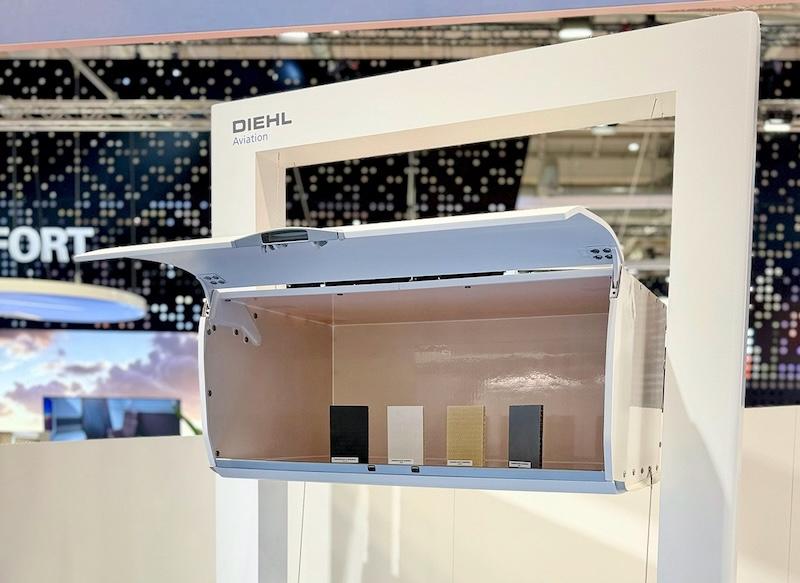This article is published in Aviation Week & Space Technology and is free to read until May 10, 2025. If you want to read more articles from this publication, please click the link to subscribe.

HAMBURG—Diehl Aviation has matured its Eco Bin concept for an entirely recyclable overhead baggage compartment, the materials of which can be reused to manufacture other cabin components, showcasing it at the AIX cabin interior show here in Hamburg.
The technology readiness level (TRL) of the Eco Bin shows an increasing number of cabin components could make a significant and almost immediate contribution to aviation’s sustainability endeavor, if airframers and carriers were adopting them swiftly.
Instead of using a variety of materials, making it difficult to sort the recyclable ones, the Eco Bin is made of only thermoplastic composites and metal. Both materials (polyetherimide, in the case of the thermoplastic parts) are recyclable, says Carsten Laufs, senior vice president for product innovation and digitization. The components are bolted together, thus avoiding the use of glue or adhesives and facilitating the dismantling process.
The panels retain a honeycomb internal structure, and Diehl has created a curved panel for the door, in addition to the flat panels it had shown previously at AIX for the rest of the bin. Different colors are available, Laufs says.
At the end of the lifecycle, or up to 20 years, the bin can be recycled and repurposed into other aircraft interior components, such as brackets. In the future, Diehl expects advancements in recycling technologies will enable the recovered materials to be used in products “very close to the original.”
The Eco Bin is weight-neutral, meaning lighter components offset the addition of screws. As for cost, it is seen as slightly more expensive than the conventional alternative, but producing large quantities could generate economies of scale.
The proof of concept stands at TRL 5, meaning it is close to the required maturity (usually TRL 6) to launch a product development. Flammability tests have been successful. If a launch customer was found today, a product could enter service in two years, Laufs says.





